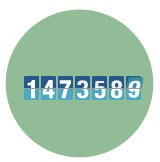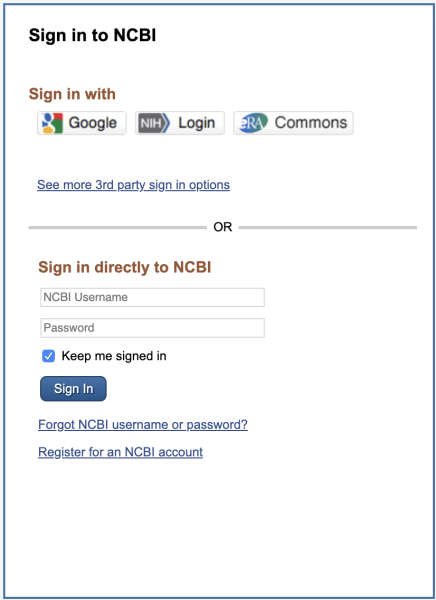Website Search
Find information on spaces, staff, and services.
Find information on spaces, staff, and services.
Source: ACL Public Access to Publications Plan (2016); ACL Public Access Plan (2024)
Impacts: Peer-reviewed scholarly publications derived from research directly supported by ACL grants and accepted for journal publication on or after October 1, 2016. It is expected that the ACL will continue to use the 2016 plan until the update is made effective on or around December 31, 2025.
Timeline:
(2016)
(2024 Update)
See Submitting a Manuscript (below) for information on the different submission methods.
Who Submits: Authors, associated PI’s or 3rd parties (grant managers, delegates, etc.)
What to Submit: Final peer-reviewed manuscripts accepted for publication. Versions of record may be submitted if the authors hold copyright (e.g., open access) or have permission.
Format: Wide range of formats acceptable
Where to Submit: NIH Manuscript Submission System (NIHMS)
Public Access Repository: PubMed Central (PMC)
Per the 2024 Update, authors submitting their manuscripts to the PMC should use an appropriate level of Creative Commons or equivalent license that will allow the re-use of the publications with appropriate attributions.
Compliance with federal public access policy requires the successful submission of the author accepted manuscript (AAM) of a peer reviewed journal article to PubMed Central, which is the US Department of Health and Human Services’ full-text database. Article authors or PI’s may submit the AAM or the published version in cases where they hold the copyright through the NIH’s Manuscript Submission System (NIHMS). Journals or publishers may also submit the AAM through the NIHMS, or directly to the PMC if they have an agreement with the funder to do so.
Specific submission requirements are dictated by when the AAM was accepted for publication and the nature of that policy iteration. Typically, papers accepted for publication before the effective date of the newest policy iteration will use the earlier plan.
2016 Plan: AAM’s derived from research funded by ACL awards and accepted for publication before December 31, 2025, must be submitted to PMC via the NIHMS (or directly to the PMC) within 12 months of publication by the authors, associated PI’s (awardees), journals, or publishers. Papers submitted within three months of their official publication dates will receive an in-progress (compliant) status on award progress reports. This status will become non-compliant at the end of the 3-month period unless a PMCID is issued.
2024 Plan: AAM’s accepted for publicaiton on or after December 31, 2025, should be submitted to PubMed Central upon acceptance and made fully accessible in PubMed Central, without embargo, on their official publication dates. Authors, associated PI’s, journals, or publishers may submit through the NIHMS or directly to the PMC, where possible by funder agreement. Manuscripts not available through the PMC or in-process in the NIHMS by their official publication dates (first full-text publication digitally or in print) are considered out of compliance with the policy.
A step-by-step guide to the PMC submission process can be found at https://pmc.ncbi.nlm.nih.gov/about/submission-methods/
Authors, PI’s and third-parties may submit AAM’s to the NIHMS. The submission process typically takes 2-3-weeks and requires that an author or PI associated with the article act as the quality assurance reviewer of the manuscript as it passes through the initial and final approval phases.
The NIHMS submission process includes:
| Step | Description |
|---|---|
 | Step 1: Deposit Files A manuscript may be submitted by the author, the PI, the publisher, or another third party. Third-party submitters must designate an author or PI to serve as the Reviewer for an NIHMS submission. The Reviewer will receive notification of the deposit via e-mail. |
 | Step 2: Initial Approval The Reviewer reviews the submission, confirms or adds associated funding, and either rejects or approves the material for processing in NIHMS. |
 | Step 3: NIHMS Conversion NIHMS staff reviews the approved files for completeness, and complete submissions are converted to archival XML. The PMC-ready documents (Web and PDF versions) are checked to ensure they accurately reflect the submitted files. An e-mail notification is sent to the Reviewer when the record is available for final review. |
 | Step 4: Final Approval The Reviewer reviews the PMC-ready documents (Web and PDF versions) and either requests corrections or approves them for inclusion in PMC. Final Approval is required to complete manuscript processing in NIHMS. |
 | Step 5: PMCID Assigned A PMCID is assigned when Final Approval is complete and the manuscript is matched to a PubMed record with complete citation information. For details, see When will a PMCID be assigned to my manuscript? in the NIHMS FAQ. |
 | Step 6: Publicly Accessible Manuscript is made available in PMC following the publisher-required embargo period (if applicable). |
Source: NCBI (www.ncbi.nlm.nih.gov/books/NBK3846)
Successful NIHMS submissions include:
The NIHMS will email the designated reviewer requests for approval. Only papers that receive both approvals will be uploaded into PMC and receive their PubMed Central Identification Number (PMCID), indicating public access compliance.
The NIHMS embargo period, which is utilized by manuscripts accepted before December 31, 2025, is the 0-12 month term following the work’s publication date that a publisher retains exclusive rights to distribute the full-text of the article. The complete publication will not be made available in PMC until after the publisher-stipulated embargo period has ended. Complying with the public access requirement is independent of the embargo period.
Reviewers must select the publisher’s stated embargo period during the NIHMS approval process. Publications often include embargo period information in the Author Guidelines sections of their websites. Papers submitted to the NIHMS 12-months past their publication date do not receive embargo periods and are immediately made publicly accessible in PMC.
Manuscripts accepted for publication on or after December 31, 2025, do not use an embargo period and will be made fully accessible on their official publication dates.
My NCBI is a collection of tools that allow researchers to generate and save search results from multiple databases, generate biosketches, and collect publications in an electronic bibliography.
The My Bibliography system not only allows authors to record and manage their citations (and see their citations’ public access compliance status), but acts as the primary means for adding publications to award progress reports. To utilize the My Bibliography system’s functionality a researcher’s NCBI and eRA Commons accounts must be linked (see How to Link eRA Commons and NCBI accounts).
Researchers or support staff may create or sign-in to My NCBI accounts using their eRA Commons, NIH, Google or university credentials.

For more information on My Bibliography functions: